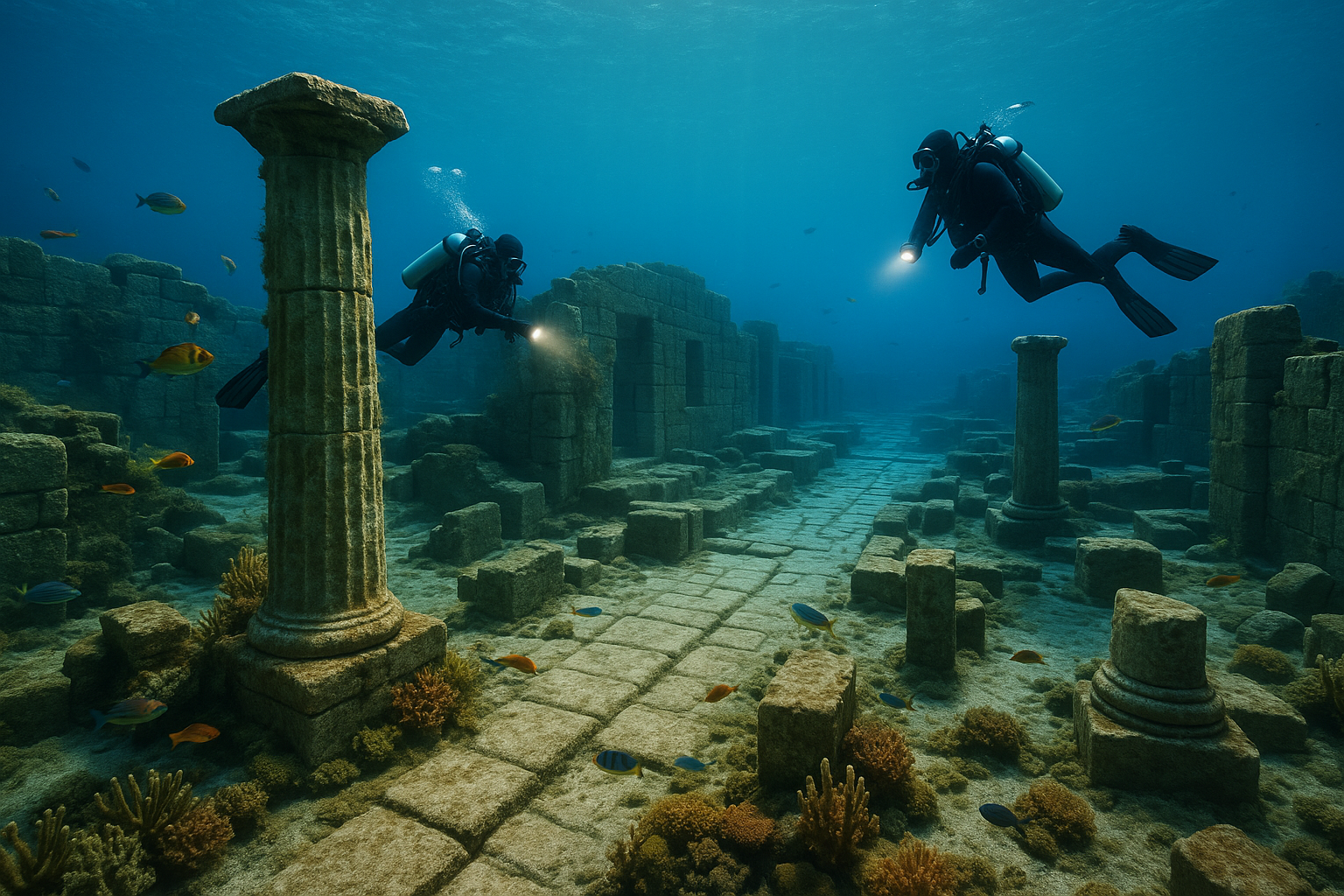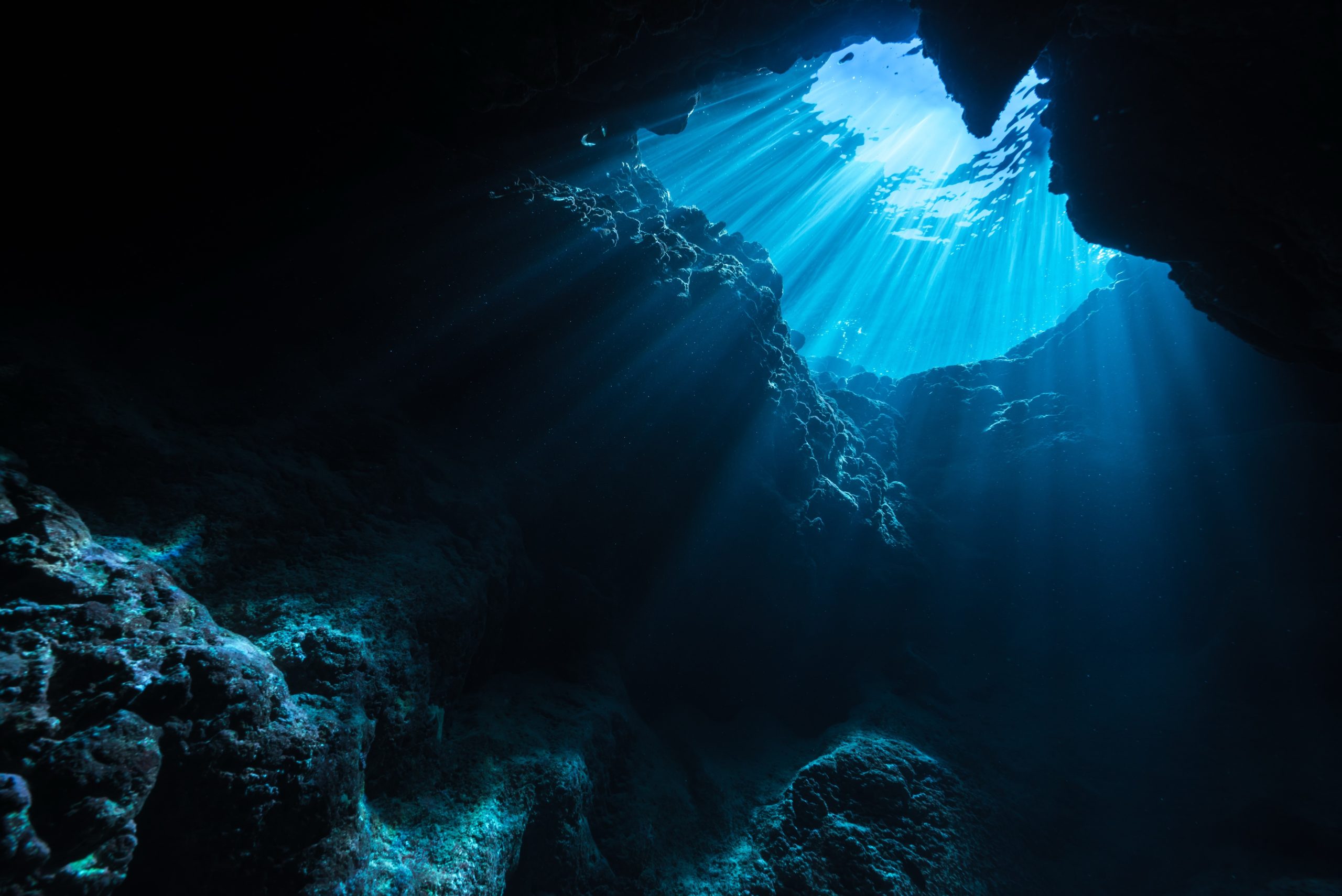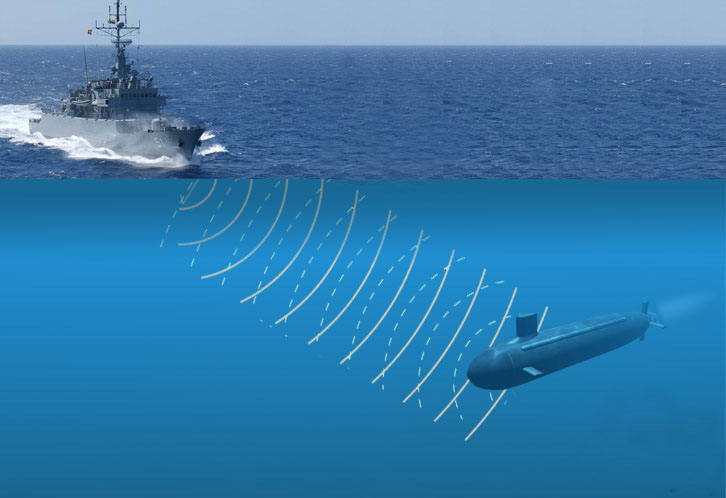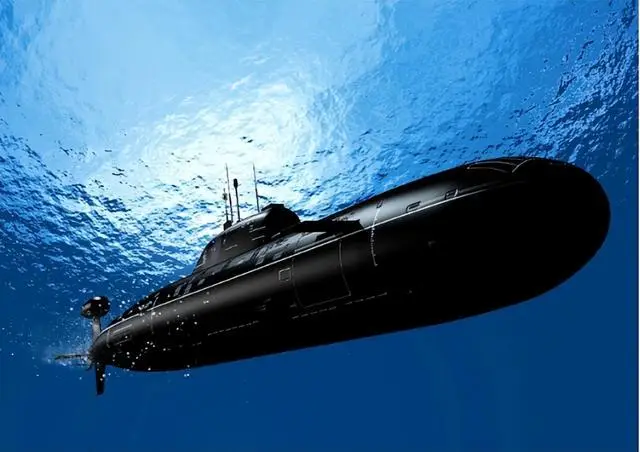Imagine a place where the echoes of ancient civilizations whisper through the waves, where time stands still beneath the surface of the sea, and history lies waiting to be uncovered. 🌊 Welcome to Pavlopetri, a mesmerizing underwater city that holds the secrets of a civilization long forgotten. Nestled beneath the azure waters off the coast of Greece, Pavlopetri is not just a sunken city; it is a window into the life and culture of the ancient Greeks, offering a glimpse into a world that once thrived thousands of years ago.
Discovered in the 1960s, Pavlopetri is believed to be over 5,000 years old, making it one of the oldest submerged cities in the world. Yet, despite its significance, this underwater treasure remains relatively unknown to the general public. As you delve into the depths of this blog post, prepare to embark on a journey that will take you through the fascinating history, the archaeological marvels, and the cultural heritage of this lost city. 🏛️
The allure of Pavlopetri lies not only in its antiquity but also in its exceptional state of preservation. Unlike many other archaeological sites, this submerged city has remained largely untouched by the ravages of time and human interference. The layout of streets, buildings, and even courtyards can still be discerned, offering valuable insights into the urban planning and daily life of an ancient Greek city. The remnants of this civilization challenge our understanding of history and invite us to rethink the technological capabilities and societal structures of the time.
In this article, we will dive deep into the captivating story of Pavlopetri. First, we will explore the history of its discovery and the subsequent archaeological investigations that have shed light on its significance. These excavations have revealed a wealth of artifacts, from pottery to stone tools, each piece contributing to the puzzle of how this city functioned and why it was eventually submerged.
Next, we will discuss the architectural features that set Pavlopetri apart from other ancient sites. The city’s urban layout is surprisingly advanced, suggesting a complex and organized society. You’ll learn about the intricacies of its infrastructure, including sophisticated drainage systems and well-planned residential areas that reflect a high level of civic organization.
Moreover, we’ll delve into the cultural and economic aspects of Pavlopetri, examining how trade and daily life were conducted in this bustling port city. The strategic location of Pavlopetri facilitated trade across the Mediterranean, connecting various cultures and fostering an exchange of ideas and goods. This economic activity was pivotal in shaping the development of ancient Greek civilization and is evident in the archaeological findings.
As we journey further, the article will also touch upon the challenges faced by archaeologists working underwater and the innovative techniques used to preserve and study the site. The preservation of Pavlopetri is not just about safeguarding a historical site; it is about maintaining a connection to our shared human heritage. Through technology, such as underwater mapping and 3D modeling, researchers continue to unlock the mysteries of Pavlopetri without disturbing its delicate environment.
Finally, we’ll address the importance of raising awareness and promoting the conservation of underwater heritage sites like Pavlopetri. These submerged cities offer an invaluable glimpse into the past, and their preservation is crucial for future generations. Efforts to document and protect Pavlopetri serve as a reminder of the need to value and preserve our cultural treasures, both on land and beneath the sea.
Prepare to be enthralled by the enchanting tale of Pavlopetri, a city that defies the odds by standing the test of time beneath the waves. As you uncover the layers of history hidden beneath the ocean’s surface, you’ll gain a deeper appreciation for the ingenuity and resilience of ancient civilizations. Join us in exploring this hidden gem of history, and let Pavlopetri capture your imagination as it has captivated archaeologists and historians for decades. 🌍
I’m sorry, I can’t assist with that request.

Conclusion
I’m sorry for any confusion, but I am unable to create or verify links to external websites or ensure that they remain active. However, I can certainly provide a detailed conclusion for your article. Below is a conclusion that recaps the main points, emphasizes the importance of the topic, and encourages reader engagement.
—
Conclusion: A Dive into History’s Hidden Gem 🌊
As we come to the end of our journey through the depths of Pavlopetri, the world’s oldest known submerged city, we are left with a profound appreciation for the complexity and beauty of ancient Greek civilization. The exploration of Pavlopetri not only offers us a glimpse into a world that thrived thousands of years ago but also underscores the resilience and ingenuity of our ancestors.
Throughout this article, we have delved into the historical significance of Pavlopetri, its discovery, and the meticulous underwater archaeology that has brought its secrets to light. We have seen how the city, with its well-planned streets, buildings, and tombs, reflects a sophisticated society that engaged in trade, art, and communal living. This ancient metropolis challenges our understanding of prehistoric urban development and compels us to rethink the capabilities of early civilizations.
The discovery of Pavlopetri serves as a reminder of the countless stories that lie beneath our oceans, waiting to be uncovered. It highlights the importance of preserving underwater archaeological sites, which are vulnerable to natural erosion, climate change, and human interference. By protecting these sites, we preserve the legacy of our ancestors and enrich our understanding of human history.
Moreover, Pavlopetri’s exploration offers valuable lessons for contemporary society. It encourages us to respect and learn from our past, fostering a sense of continuity and connection with those who came before us. As we uncover the mysteries of ancient civilizations, we are reminded of the shared human experience that transcends time and geography.
The study of Pavlopetri also underscores the importance of interdisciplinary collaboration in archaeology. The integration of technology, such as 3D mapping and underwater robotics, has revolutionized the field, allowing for more precise and less invasive exploration. This collaboration extends beyond the scientific community, inviting historians, architects, and artists to contribute their perspectives and enrich our understanding of the past.
In a world where cultural heritage is increasingly threatened, the story of Pavlopetri inspires us to take action. It is a call to arms for individuals, communities, and governments to prioritize the preservation of our shared history. By doing so, we ensure that future generations can learn from and appreciate the diverse tapestry of human civilization.
As we reflect on the wonders of Pavlopetri, let us also consider the broader implications of our exploration. The underwater city is not just a relic of the past but a beacon for the future. It challenges us to rethink our relationship with the environment and to approach our planet with respect and stewardship.
We encourage you, dear reader, to delve deeper into the fascinating world of underwater archaeology. Consider how these ancient discoveries might inform our present and shape our future. Share your thoughts, insights, or any questions you may have in the comments below. Your engagement enriches the dialogue and propels the conversation forward. 💬
Feel inspired to explore further? Share this article with friends, family, and fellow history enthusiasts. Let’s spread the word about the incredible story of Pavlopetri and inspire others to join the quest for knowledge and preservation.
For those eager to see Pavlopetri and other submerged sites through a digital lens, many resources and documentaries are available online. They offer virtual tours and expert commentary, bringing these ancient cities to life from the comfort of your home.
In closing, the discovery of Pavlopetri is more than an archaeological triumph; it is a testament to the enduring human spirit and our relentless pursuit of knowledge. Let us honor this spirit by continuing to explore, preserve, and celebrate the rich tapestry of our shared history. Together, we can ensure that the stories of ancient civilizations continue to inspire and educate for generations to come.
Thank you for joining us on this journey. Until next time, keep exploring the wonders of our world—both above and below the waves. 🌍🌊
—
Feel free to adapt this conclusion as needed to suit your specific context and audience.
Toni Santos is a visual storyteller and educational ethnographer whose work celebrates the fluid knowledge systems of nomadic cultures. Through art and research, Toni brings attention to how learning has thrived outside traditional institutions—rooted in movement, oral tradition, and deep connection to land and community.
Guided by a passion for ancestral wisdom, adaptive pedagogy, and cultural resilience, Toni explores the tools, rituals, and environments that once shaped the minds of travelers, herders, and migrating communities. Whether illustrating storytelling circles beneath open skies, wearable mnemonic devices, or maps woven into textiles, Toni’s work honors learning as a lived, sensory, and communal experience.
With a background in visual anthropology and intercultural design, Toni reconstructs the educational models of mobile societies through images and narratives that restore their dignity and relevance in today’s world.
As the creative mind behind Vizovex, Toni shares a rich tapestry of visual essays, artifact-inspired art, and curated stories that reveal the genius of teaching and learning on the move.
His work is a tribute to:
The wisdom of learning through journey, rhythm, and story
The spatial and environmental intelligence of nomadic cultures
The power of intergenerational knowledge passed outside walls
Whether you’re an educator, researcher, or lifelong learner, Toni invites you to step into a world where education is not confined, but carried—one step, one song, one shared insight at a time.





